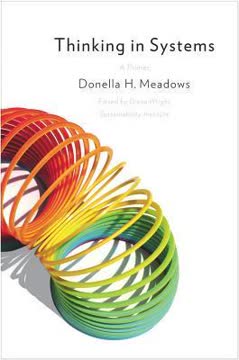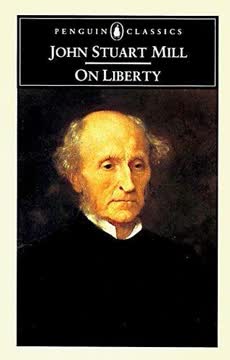重点摘要
1. 幽默是公共演讲和说服的有力工具
“一个笑话通常比严肃更高效地切入重要问题。”
笑声作为说服手段。 幽默具有独特的能力,可以打破障碍,吸引注意力,使复杂或有争议的话题更易接近。在公共演讲和辩论中,恰到好处的笑话可以:
- 瓦解对手
- 缓解紧张气氛
- 使论点更难忘
- 与观众建立融洽关系
战略性使用。 然而,幽默的使用必须具有战略性。考虑:
- 情况的严重性
- 观众的期望
- 可能的反效果或冒犯
著名的演说家西塞罗经常在演讲中巧妙地运用幽默,展示了即使在严肃的政治和法律事务中,笑声也可以成为强大的盟友。
2. 有效的笑话平衡机智、时机和观众意识
“演说家绝不能像街头表演者那样夸张地做面部表情和手势来博取笑声。”
了解你的观众。 有效幽默的关键在于理解你的听众。考虑:
- 他们的背景和知识
- 文化敏感性
- 场合和时机
时机至关重要。 笑话的成功往往取决于它的时机:
- 在严肃的观点之后用幽默来缓解紧张
- 留出时间让观众笑和反应
- 不要过度——太多笑话会削弱可信度
传递方式和内容同样重要。微妙的机智和聪明的文字游戏往往比滑稽或低俗的幽默更有效。目标是增强你的信息,而不是成为喜剧演员。
3. 自嘲幽默可以很有魅力,但要适度使用
“谈论自己有时很有趣,而在背后说的无味话在公开场合调侃自己时却能引发笑声。”
人性化效果。 自嘲幽默可以:
- 使你更容易被观众接受
- 展示谦逊和自我意识
- 通过先行处理潜在批评来化解它
过度使用的风险。 然而,过多的自嘲可能:
- 削弱你的权威和可信度
- 使观众感到不适
- 变得可预测并失去魅力
平衡是关键。使用自嘲幽默来展示你不把自己看得太重,但要保持整体的能力和自信形象。这种方法在处理个人缺陷或错误时特别有效,通过幽默将潜在的弱点转化为优势。
4. 文字游戏和双关语需要技巧才能成功
“模棱两可无疑提供了最频繁的机会。”
文字游戏的艺术。 双关语和巧妙的文字游戏可以展示:
- 语言的灵活性
- 快速的思维
- 智力深度
潜在的陷阱:
- 如果过度使用,可能显得做作或老套
- 可能无法在不同语言或文化中很好地传达
- 可能过于微妙而被忽视
有效使用:
- 确保文字游戏与主题相关
- 用它来强调一个观点,而不仅仅是为了搞笑
- 如果不成功,准备好解释或迅速转移话题
西塞罗和其他古代演说家经常使用文字游戏,但他们是有策略地使用,确保它服务于他们的整体论点,而不是成为干扰。
5. 讲故事和轶事是幽默的有力载体
“讲述有趣的故事,首先是微妙和演说的。”
叙事的力量。 幽默的故事和轶事可以:
- 情感上吸引观众
- 以可理解的方式阐明复杂的观点
- 创造难忘的时刻
有效的讲故事技巧:
- 保持简洁和相关
- 使用生动的细节和角色
- 为最大效果建立紧张和惊喜
实践中的例子:
- 个人经历(真实或夸张)
- 历史轶事
- 假设情景
关键是确保故事服务于你的更大目的,无论是说服、告知还是娱乐。一个精心制作的轶事往往比直接陈述更能传达信息。
6. 肢体喜剧和手势应谨慎使用
“然而,面部表情和姿态在适当的时候也不失为一种幽默。”
肢体语言增强幽默。 微妙的肢体动作可以:
- 强调笑点
- 表达讽刺或挖苦
- 补充语言幽默
过度使用的风险:
- 可能显得不专业或滑稽
- 可能分散信息的注意力
- 在正式场合可能不适用
有效使用的指南:
- 保持手势自然和微妙
- 将肢体喜剧与整体风格和信息相一致
- 注意文化差异中的肢体语言
记住,作为演说家,你的主要目标是说服和告知,而不是表演。肢体幽默应增强你的言辞,而不是掩盖它们。
7. 文化背景和共享的参考资料增强幽默效果
“从历史中引出幽默是有学问的。”
利用共享知识。 幽默常常依赖于:
- 共同的文化基石
- 历史参考
- 当前事件和流行文化
文化参考的好处:
- 与观众建立即时联系
- 展示你的知识和相关性
- 为幽默增加层次感
潜在的挑战:
- 有排除不熟悉参考资料的人的风险
- 过时的参考可能会失败
- 可能需要解释,降低效果
使用文化参考时,确保它们被你的观众广泛理解。如果有疑问,提供简要背景或选择更普遍的主题。目标是通过共享理解来团结观众,而不是分裂他们。
8. 掌握即兴幽默和机智需要练习
“机智的反击确实有其独特的特性。”
快速机智的艺术。 即兴幽默展示了:
- 心智敏捷
- 自信
- 随机应变的能力
培养即兴技巧:
- 学习和分析成功的反击
- 在低风险的情况下练习
- 学会读懂场合并评估反应
有效反击的策略:
- 仔细聆听以设置机会
- 利用对手的话语反击
- 保持回应简洁有力
记住,目标不是羞辱,而是瓦解和说服。一个精心设计的反击可以在辩论或讨论中转移局势。
9. 幽默可以缓解紧张并赢得敌对观众
“它常常在我们不经意间爆发,不仅从面部和声音中挤出承认,甚至强烈地摇动整个身体。”
笑声作为桥梁。 幽默可以:
- 打破演讲者与观众之间的障碍
- 在高压情况下缓解紧张
- 使困难的话题更易接近
对敌对观众的技巧:
- 自嘲幽默展示谦逊
- 包含自己的轻微调侃
- 通过共享经验找到共同点
注意事项:
- 避免可能被视为嘲讽或轻视的幽默
- 准备好应对幽默失败的备选方案
- 读懂场合——有时情况过于严肃,不适合开玩笑
如果运用得当,幽默可以将敌对观众转变为接受的观众,为更实质性的交流打开大门。
10. 幽默的伦理考量:避免向下攻击
“我们绝不愿意伤害他人,远离那种为了取笑而失去朋友的做法。”
幽默的伦理。 负责任地使用幽默需要:
- 了解权力动态
- 对边缘化群体的敏感性
- 考虑潜在的伤害
伦理幽默的指南:
- 向上攻击,而不是向下(针对更有权力的人,而不是更少)
- 避免基于刻板印象或偏见的幽默
- 如果笑话引起意外冒犯,愿意道歉
伦理幽默的好处:
- 与多样化的观众建立信任
- 展示社会意识和同理心
- 避免疏远潜在的盟友或支持者
记住,演说中的幽默目标是说服和团结,而不是分裂或伤害。通过考虑笑话的伦理影响,你可以确保你的幽默增强而不是削弱你的信息。
最后更新日期:
FAQ
What's "How to Tell a Joke" about?
- Ancient Guide to Humor: "How to Tell a Joke" by Marcus Tullius Cicero is an ancient guide that explores the art of humor, focusing on how jokes can be used effectively in public speaking.
- Cicero's Insights: The book is based on Cicero's treatise "On the Ideal Orator," where he discusses the role of humor in rhetoric and its power to persuade and entertain.
- Modern Relevance: Although rooted in ancient Rome, the principles and techniques discussed are applicable to modern readers interested in enhancing their communication skills with humor.
Why should I read "How to Tell a Joke"?
- Learn from a Master: Cicero was one of the greatest orators of ancient Rome, and his insights into humor are both profound and practical.
- Enhance Communication Skills: The book provides techniques to incorporate humor into public speaking, making it a valuable resource for anyone looking to improve their persuasive abilities.
- Cultural and Historical Context: It offers a fascinating glimpse into the use of humor in ancient Rome, enriching the reader's understanding of historical rhetoric.
What are the key takeaways of "How to Tell a Joke"?
- Humor as a Tool: Humor can be a powerful tool in rhetoric, capable of swaying audiences and diffusing tension.
- Types of Humor: Cicero categorizes humor into different types, such as jokes based on language and those based on situations, each with its own strategic use.
- Balance and Timing: Effective humor requires a balance of wit and timing, and understanding the audience is crucial to avoid missteps.
How does Cicero define humor in "How to Tell a Joke"?
- Two Main Types: Cicero defines humor as either based on language (wordplay, puns) or on situations (anecdotes, parodies).
- Purpose of Humor: Humor should aim to entertain, persuade, or criticize, depending on the context and audience.
- Cultural Context: Cicero emphasizes that humor must be appropriate to the cultural and social context to be effective.
What are the different types of jokes according to Cicero?
- Language-Based Jokes: These include puns, wordplay, and clever turns of phrase that rely on linguistic dexterity.
- Situation-Based Jokes: These involve storytelling, parody, and mimicry, often requiring a setup and punchline.
- Combination Jokes: The most effective jokes often combine elements of both language and situation for maximum impact.
How does Cicero suggest using humor in public speaking?
- Strategic Use: Cicero advises using humor strategically to win over audiences, lighten serious topics, and undermine opponents.
- Avoid Overuse: He warns against overusing humor, which can undermine credibility and authority.
- Adapt to Audience: Understanding the audience's sensibilities and cultural context is crucial for humor to be well-received.
What are some examples of Cicero's humor techniques?
- Quick Comebacks: Cicero was known for his quick wit and ability to deliver sharp comebacks that disarmed opponents.
- Storytelling: He often used humorous anecdotes to illustrate points and engage his audience.
- Parody and Mimicry: Cicero employed parody and mimicry to entertain and subtly criticize others.
What role does humor play in rhetoric according to Cicero?
- Persuasive Power: Humor can enhance the persuasiveness of an argument by making the speaker more relatable and likable.
- Emotional Impact: It can break tension, diffuse hostility, and create a positive emotional response in the audience.
- Social Commentary: Humor allows for subtle social commentary and critique, often making serious points more palatable.
How does Quintilian's view on humor compare to Cicero's?
- Complementary Views: Quintilian, another great rhetorician, complements Cicero's views by emphasizing the importance of timing and appropriateness in humor.
- Risks of Humor: Quintilian highlights the risks of humor, such as offending the audience or appearing frivolous.
- Educational Value: He suggests that humor can be taught and refined through practice and understanding of rhetorical principles.
What are the best quotes from "How to Tell a Joke" and what do they mean?
- "A joke is great wisdom, and a joke sometimes outwits severity." This quote underscores the power of humor to convey wisdom and challenge serious matters effectively.
- "Cicero often got carried away with the ridicule and veered into stand-up comedy." This reflects Cicero's reputation for using humor liberally, sometimes blurring the line between oratory and comedy.
- "Humor can collapse the distinction between an orator and a comedian." This highlights the dual role humor can play in both entertaining and persuading an audience.
How does Cicero address the potential pitfalls of using humor?
- Audience Sensitivity: Cicero warns that humor can backfire if it offends or alienates the audience, emphasizing the need for sensitivity.
- Maintaining Dignity: He advises speakers to maintain their dignity and authority, avoiding humor that could undermine their credibility.
- Cultural Awareness: Understanding cultural norms and expectations is crucial to ensure humor is appropriate and effective.
Is humor a teachable skill according to Cicero?
- Innate vs. Learned: Cicero suggests that while some aspects of humor may be innate, many techniques can be learned and refined.
- Practice and Observation: He emphasizes the importance of practice and observation in developing a keen sense of timing and appropriateness in humor.
- Role of Experience: Real-life experience and interaction with diverse audiences can enhance one's ability to use humor effectively.
评论
《如何讲笑话》评价褒贬不一,平均评分为3.26分(满分5分)。正面评价称赞其对古罗马幽默和修辞的见解,认为其内容既有启发性又有趣。批评者指出译者的风格松散、现代化,有些人觉得耳目一新,而另一些人则认为不合时宜。许多人欣赏双语格式,但在面对无法翻译的笑话和文化背景时感到困难。读者重视书中关于在公开演讲中融入幽默的建议,尽管有些人认为这些建议过时或带有精英主义。总体而言,这本书被认为是对古典智慧和演讲艺术的独特一瞥。
Similar Books
















